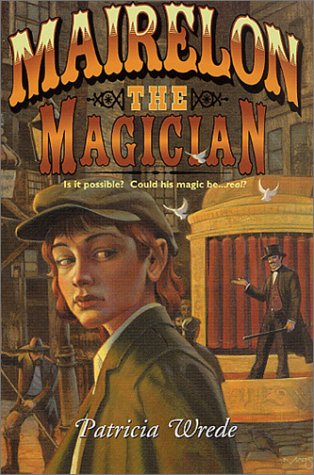Captain, The Rifle Brigade (The Prince Consort's Own)
Born: 20 November 1862, Congreve, Staffordshire
Died: 26 February 1927, Malta
 Citation: At Colenso on the 15th December, 1899, the detachments serving the guns of the 14th and 66th Batteries, Royal Field Artillery, had all been either killed, wounded, or driven from their guns by Infantry fire at close range, and the guns were deserted.
Citation: At Colenso on the 15th December, 1899, the detachments serving the guns of the 14th and 66th Batteries, Royal Field Artillery, had all been either killed, wounded, or driven from their guns by Infantry fire at close range, and the guns were deserted.About 500 yards behind the guns was a donga in which some of the few horses and drivers left alive were sheltered. The intervening space was swept with shell and rifle fire.
Captain Congreve, Rifle Brigade, who was in the donga, assisted to hook a team into a limber, went out, and assisted to limber up a gun. Being wounded, he took shelter; but, seeing Lieutenant Roberts fall, badly wounded, he went out again and brought him in. Captain Congreve was shot through the leg, through the toe of his boot, grazed on the elbow and the shoulder, and his horse shot in three places.
(London Gazette Issue 27160 dated 2 Feb 1900, published 2 Feb 1900.)
THE HONOURABLE FREDERICK HUGH SHERSTON ROBERTS
Lieutenant, King's Royal Rifle Corps
Born: 8 January 1872, Umballa, India
Died: 17 December 1899, Chieveley, Natal, South Africa
 Citation: Lieutenant Roberts assisted Captain Congreve. He was wounded in three places.
Citation: Lieutenant Roberts assisted Captain Congreve. He was wounded in three places.(London Gazette Issue 27160 dated 2 Feb 1900, published 2 Feb 1900.)
GEORGE EDWARD NURSE
Corporal, 66th Battery, Royal Field Artillery
Born: 14 April 1873, Enniskillen, County Fermanagh, Ireland
Died: 25 November 1945, Liverpool, Lancashire
 Citation: Corporal Nurse also assisted.
Citation: Corporal Nurse also assisted.(London Gazette Issue 27160 dated 2 Feb 1900, published 2 Feb 1900.)
HAMILTON LYSTER REED
Captain, 7th Battery, Royal Field Artillery
Born: 23 May 1869, Dublin, Ireland
Died: 7 March 1931, London
 Citation: Captain Reed, who had heard of the difficulty, shortly afterwards brought down three teams from his battery to see if he could be of any use. He was wounded, as were five of the thirteen men who rode with him, one was killed; and thirteen out of twenty-one horses were killed before he got half-way to the guns, and he was obliged to retire.
Citation: Captain Reed, who had heard of the difficulty, shortly afterwards brought down three teams from his battery to see if he could be of any use. He was wounded, as were five of the thirteen men who rode with him, one was killed; and thirteen out of twenty-one horses were killed before he got half-way to the guns, and he was obliged to retire.(London Gazette Issue 27160 dated 2 Feb 1900, published 2 Feb 1900.)
HARRY NORTON SCHOFIELD
Captain, Royal Field Artillery
Born: 29 January 1865, Audenshaw, Ashton under Lyne, Lancashire
Died: 10 October 1931, London
 Citation: At Colenso, on the 15th December, 1899, when the detachments serving the guns of the 14th and 66th batteries, Royal Field Artillery, had all been killed, wounded, or driven from them by Infantry fire at close range, Captain Schofield went out when the first attempt was made to extricate the guns, and assisted in withdrawing the two that were saved.
Citation: At Colenso, on the 15th December, 1899, when the detachments serving the guns of the 14th and 66th batteries, Royal Field Artillery, had all been killed, wounded, or driven from them by Infantry fire at close range, Captain Schofield went out when the first attempt was made to extricate the guns, and assisted in withdrawing the two that were saved.************
In consequence of the above the appointment of this Officer to the Distinguished Service Order, which was notified in the London Gazette of the 19th April, 1901, is cancelled.
(London Gazette Issue 27350 dated 30 Aug 1901, published 30 Aug 1901.)
Note: Captain Congreve (later General Sir Walter Norris Congreve VC KCB MVO DL) was the father of William La Touche Congreve VC DSO MC, who was awarded the Victoria Cross for his services as a major on the Western Front in 1916. Lieutenant Roberts - who died two days later of his wounds - was the son of Field Marshal The Earl Roberts of Kandahar VC KG KP GCB OM GCSI GCIE PC, who had been awarded the Victoria Cross for his services as a lieutenant in India in 1858. Only one other father/son pair (C J S Gough and J E Gough) has been awarded the Victoria Cross.
Major William Babtie, RAMC, was awarded the Victoria Cross for helping rescue Lieutenant Roberts.



































